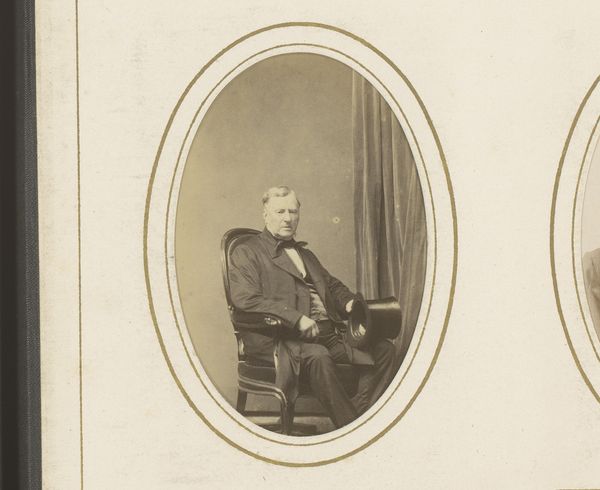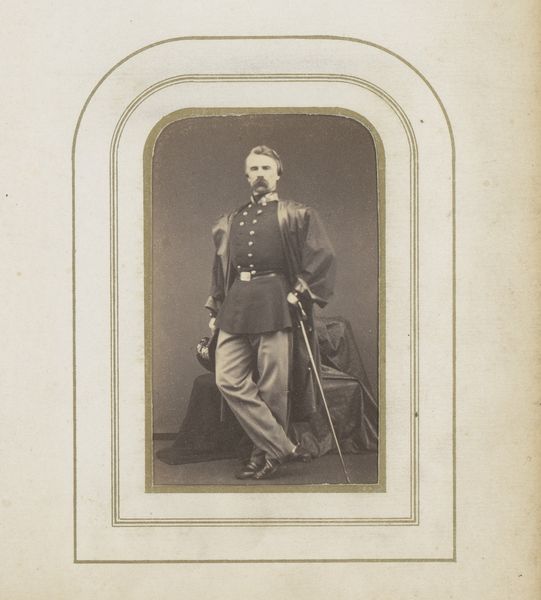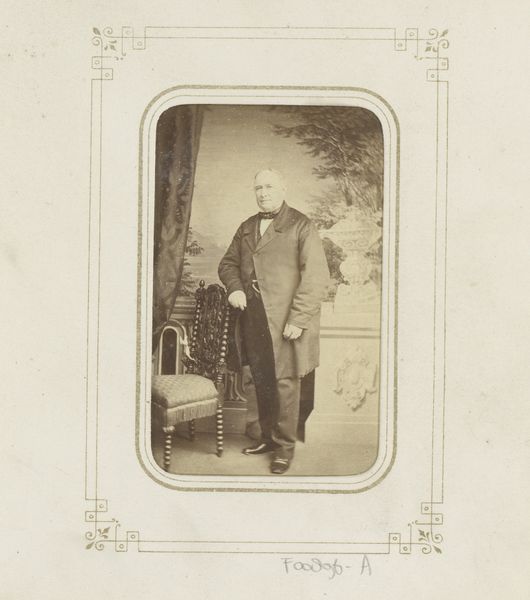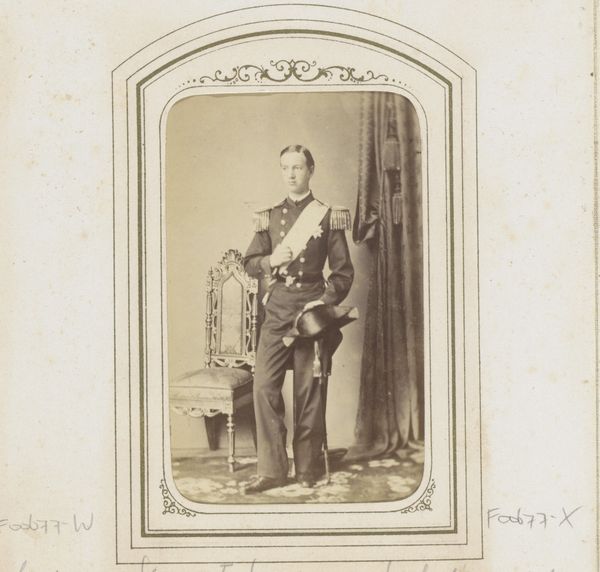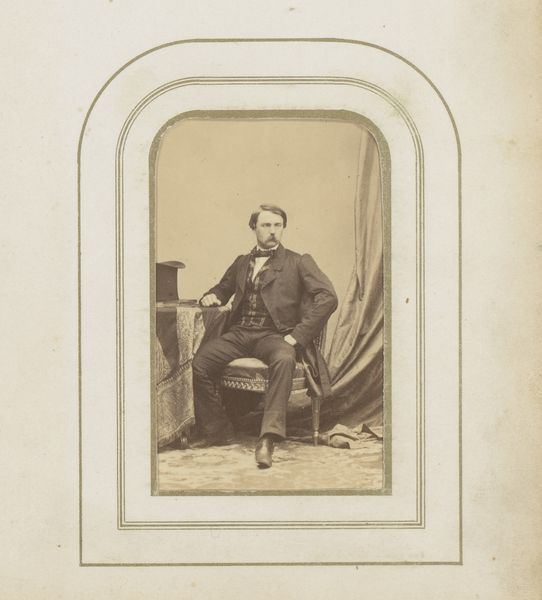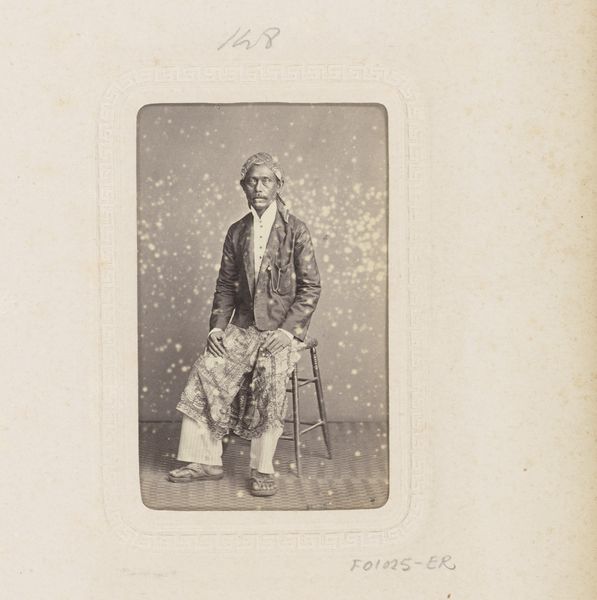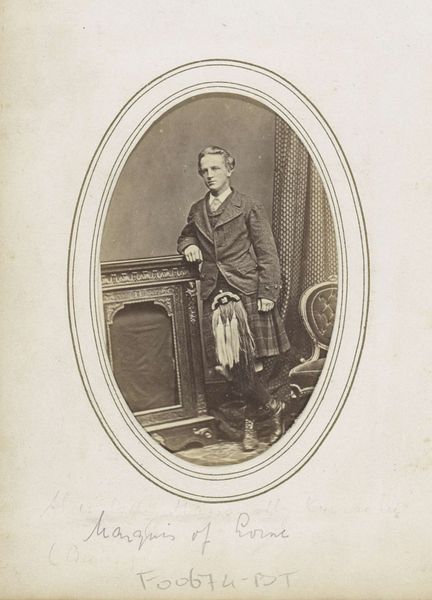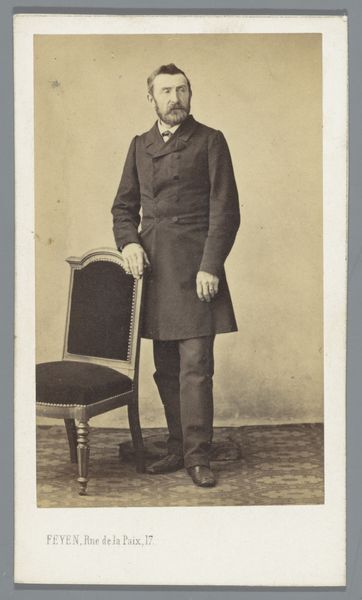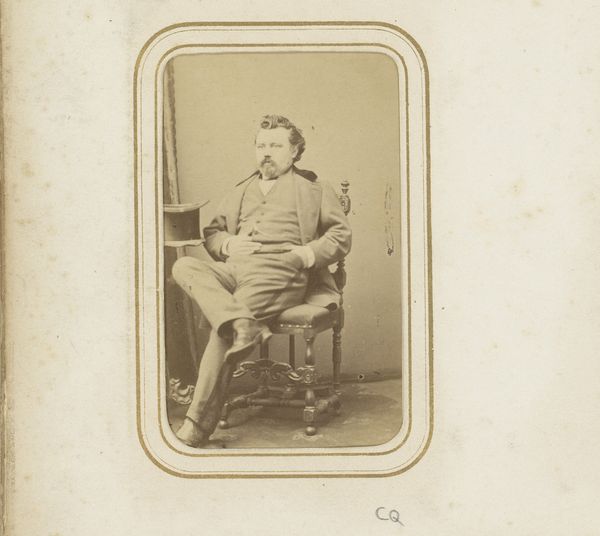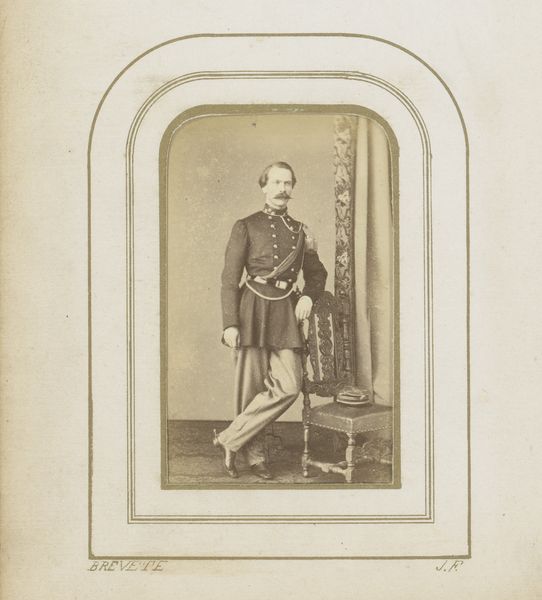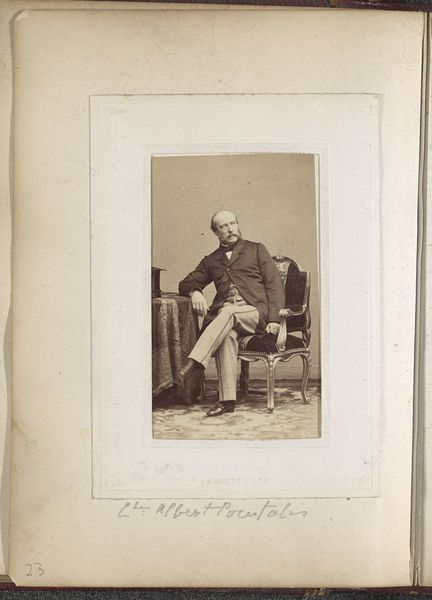
Dimensions: height 83 mm, width 50 mm
Copyright: Rijks Museum: Open Domain
Curator: Welcome! We’re looking at “Portret van een man met zwaard in uniform met medailles,” or “Portrait of a Man with Sword in Uniform with Medals,” a gelatin-silver print made sometime between 1860 and 1894. It is held here at the Rijksmuseum. It’s a striking image, isn't it? Editor: Absolutely! There's a certain arrogance in the pose, isn’t there? Arms crossed tightly, gaze steady, sword dangling – he wants you to know he’s in charge. The tight-lipped expression adds to the effect; it says so much about masculinity and power in that era. Curator: Indeed. This portrait reflects not just the individual, but also the power structures of 19th-century society. Photography was becoming more accessible then, offering a way for people, particularly those in positions of authority, to craft and disseminate their image. The uniform itself speaks volumes, symbolizing discipline, hierarchy, and military might. Editor: Exactly. Consider the cultural context. This era was steeped in Romanticism and the beginnings of modern nationalism, ideologies that celebrated heroism, duty, and often, militarism. He’s not just a man in a uniform; he's embodying the virtues the Empire wishes to project. How does this portrait engage with questions of social status and identity? Curator: It definitely performs a certain identity. The medals, for instance, weren’t merely decorative; they were public markers of his achievements and service, visibly legitimizing his position in society. Moreover, photography democratized portraiture but it simultaneously also preserved the hierarchical system that was already in place in European culture. The image may appear rigid and conventional, yet this image solidified class identity during social change and class tension. Editor: And thinking about representation, this piece reinforces a particular image of the man as stoic protector of society; it's about reinforcing gender and class stereotypes that uphold political and social hierarchies. Considering modern conversations about identity and the male gender, one cannot look at the photograph without some level of skepticism. Curator: Right, exactly. It encapsulates the period's values while reminding us to critique those same values. Thanks for adding that important context. Editor: Thanks. It's these tensions that makes history so engaging, no?
Comments
No comments
Be the first to comment and join the conversation on the ultimate creative platform.
